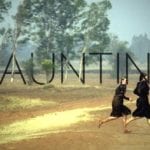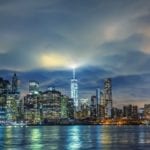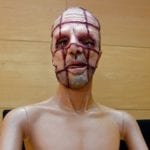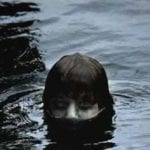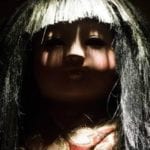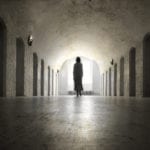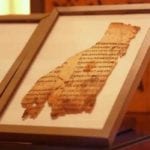 Weird Stuff
Weird Stuff  Weird Stuff
Weird Stuff  Our World
Our World 10 Ways Your Christmas Tree Is More Lit Than You Think
 Movies and TV
Movies and TV The 10 Coolest Stars to Set Sail on The Love Boat
 History
History 10 Things You Didn’t Know About the American National Anthem
 Technology
Technology Top 10 Everyday Tech Buzzwords That Hide a Darker Past
 Humans
Humans 10 Everyday Human Behaviors That Are Actually Survival Instincts
 Animals
Animals 10 Animals That Humiliated and Harmed Historical Leaders
 History
History 10 Most Influential Protests in Modern History
 Creepy
Creepy 10 More Representations of Death from Myth, Legend, and Folktale
 Technology
Technology 10 Scientific Breakthroughs of 2025 That’ll Change Everything
 Weird Stuff
Weird Stuff Ten Bizarre Facts About The Doge Meme
 Our World
Our World 10 Ways Your Christmas Tree Is More Lit Than You Think
 Movies and TV
Movies and TV The 10 Coolest Stars to Set Sail on The Love Boat
Who's Behind Listverse?

Jamie Frater
Head Editor
Jamie founded Listverse due to an insatiable desire to share fascinating, obscure, and bizarre facts. He has been a guest speaker on numerous national radio and television stations and is a five time published author.
More About Us History
History 10 Things You Didn’t Know About the American National Anthem
 Technology
Technology Top 10 Everyday Tech Buzzwords That Hide a Darker Past
 Humans
Humans 10 Everyday Human Behaviors That Are Actually Survival Instincts
 Animals
Animals 10 Animals That Humiliated and Harmed Historical Leaders
 History
History 10 Most Influential Protests in Modern History
 Creepy
Creepy 10 More Representations of Death from Myth, Legend, and Folktale
 Technology
Technology 10 Scientific Breakthroughs of 2025 That’ll Change Everything
10 Allegedly Haunted Places That Are Likely Fake
The existence of the paranormal is a controversial subject. There’s been no reputable scientific evidence to support the existence of what we call supernatural, which leaves many people to believe that all allegations of hauntings and paranormal phenomena are fake and even baseless. Staunch believers, however, would disagree. Pointing to evidence they think wasn’t properly investigated, a plethora of personal experiences, and the history of spiritual beliefs all over the world.
While these two crowds are unlikely to agree about this subject, this list sets out to cover ten examples of famous supernatural places that everyone can agree seem fishy at best, be they long-running misconceptions, factually disproven occurrences, or elaborate hoaxes.
Related: Top 10 Fake Spiritualists Who Were Caught In The Act
10 1677 Round Top Road, Harrisville
To many people, 1677 Round Top Road, Harrisville probably doesn’t ring any bells from that description alone. However, the house is very famous, largely due to a popular horror film based on it, but also because of Ed and Lorraine Warren, some of the most well-known—and in some circles most infamous—paranormal investigators of all time.
At first, this home may seem charming but is actually what The Conjuring is directly based on, a house thought to have been infested by the horrifyingly violent demon of an alleged witch named Bathsheba Sherman.
All of this certainly sounds quite scary, that is, until further research into the subject brings up many facts that suggest this story may be more of a dark fairytale. Leaving aside the fact that the Warrens aren’t as reputable as they seemed to begin with, things simply don’t add up. Bathsheba Sherman never lived on the property, only nearby, was never proven to be a witch nor evil, and the idea of her demon infesting the grounds was one thought up and spread by the Warrens, not the original owners, with no solid proof.
Furthermore, the original family lived on the property for a long decade. Their experiences are reported to have many inconsistencies with the Warrens’ account of the story and happenings at the house. And recent owners report no violent or terrifying events at the home, making the whole thing quite questionable.[1]
9 Native American Burial Grounds
Not one place, but a group of places—or actually no place at all?
The “Indian Burial Ground” trope has been an infamously common element in horror films since its popular introduction attributed to the even more infamous “Amityville Horror,” another upcoming subject on our list. It has even been linked to the source of the haunting in Poltergeist, though definitely incorrect.
The idea is that places built on now destroyed burial grounds of Native American people contain vindictive spirits or even demons, seeking to destroy those who took their land from them and built structures over their dead.
Aside from being a Hollywood trope, the idea has become a popular misconception frequently applied to reality by those who don’t know better, something there are several problems with. Native Americans currently argue that the characterization of their spirits specifically, more so than any other nation or culture, is an incorrect and slightly antagonistic idea. Alongside that common opinion, the main fact is that there’s not really such a thing as an “Indian burial ground.”
Native American culture is diverse and split into many distinct sets of beliefs and practices, with no universal treatment for or concept of the dead. As such, the concept that all of them engaged in spiritual practices to be able to haunt and terrorize modern-day peoples is simply false.[2]
8 Skinwalker Ranch
As the name of a very specific place UFO- and paranormal-enthusiasts will surely recognize, Skinwalker Ranch is said to be one of the United States’ most paranormally active places. Sightings, stories, and experiences range from allegations of the titular skinwalker, a shapeshifting, animalistic witch from Navajo culture, to ghosts, UFOs, government programs, cattle mutilation, crop circles, and a lot more.
The property—also known as the Sherman Ranch—is located in Utah and has become very infamous among skeptical circles. Even many believers simply find the accounts ridiculous.
To support that conclusion, the ranch was monitored for years. The people who lived there before the Shermans—the family from whom we learned about the property—did so for six decades. During the long time their family called the place home, they reported no unusual phenomena. Skinwalker Ranch was eventually sold to Robert Bigelow, a businessman with a passion for UFO investigations who owned it until 2016. Many people, however, believe the Shermans exploited Bigelow’s believing nature to sell the property using false or embellished claims.[3]
7 Swamps
Swamps, bogs, marshes—these biomes have always been considered to have a spooky, imposing aura around them. Tales range from creepy ghosts to strange UFO activity from all around the world. However, the most unique example is the phenomenon known as will-o’-the-wisp or ignis fatuus.
Frequently referred to as ghost lights, will-o’-the-wisps have been documented for an extremely long time. They originate from old European folklore, particularly English accounts, though well known across Europe, albeit with different names all describing the same thing.
There are a variety of explanations for them—seeing strange lights in swampy areas at night—but the most well-accepted cause is that they’re a flame-like phosphorescence caused by gases emitting from decaying plants. Interestingly, even though we have scientific explanations, accounts of the occurrence are very rare compared to the numerous accounts from history, leaving scientists to wonder just what might be the reason for that.[4]
6 Anson Highway
A once-popular topic in paranormal circles, the “Anson Light” captured many people’s imaginations when it was relevant. Described as a strange ghost light off the highway in Anson, Texas, it made news locally and was frequently discussed online.
People simply did not understand why the strange, bright lights kept appearing out in the distance. Some brushed it off as strange but nothing to worry about, while others treated it as a bad omen. The issue was particularly popular in college circles, a scary, local phenomenon that has been around for years or, according to some, decades.
It makes sense, then, that the very mundane explanation comes from a handful of college students. After triangulating the area using iPhones, the local legend of a ghost mother looking for her missing child with a lantern quickly faded, giving rise to the fact that the lights are simply car headlights from a neighboring road.[5]
5 Devil’s Tramping Ground
An ominous name with an equally ominous backstory, the Devil’s Tramping Ground is an area that’s one of the most famous reportedly haunted places in North Carolina. According to legend, the Devil himself walks around at night just as its eerie name would suggest.
While it may just seem like a random, scary idea from local folklore, there does seem to be some reasoning behind it. The Devil’s Tramping Ground is an area approximately 40 feet across where apparently no plants grow, animals don’t like to go near, and objects move or disappear after they’ve been placed.
The real explanation for all but the poorly documented third claim is simple: salt.
The ground is a natural though gradually receding salt lick, which is now only about 20 feet in diameter, causing some animals to avoid the spot since the naturally high salt content doesn’t allow grass to grow.[6]
4 Excelsior Hotel
Jefferson’s Excelsior Hotel is something of a local tourist attraction. Many people visit the small establishment due to tales of a terrifying haunting and the fact that Steven Spielberg himself resided in the hotel for a night. Supposedly, it scared him to such an extent that it inspired the film Poltergeist.
The hotel, while imposing and perhaps a little eerie with a lovely vintage style, seems to be just what it’s primarily known as—a tourist attraction.
Steven Spielberg’s tales are purely anecdotal, if not deliberately embellished. However, the hotel seems to enjoy the spotlight and additional revenue, encouraging tourists from other states to come experience the alleged, largely baseless haunting themselves.[7]
3 Frankenstein Castle
Venturing outside the United States for once, the Frankenstein Castle is one of Germany’s most famous haunted locations. A creepy, rundown castle, the birthplace of one Johann Konrad Dippel, an alleged alchemist and potion maker who ran immoral experiments—according to local lore.
As the name and story may suggest, many people believe that the castle and its creepy alchemist went on to inspire Mary Shelley’s famous novel, Frankenstein, about a similarly mad scientist experimenting on the dead just like Dippel supposedly did.
While the story is compelling, the accounts of Dippel are shaky at best, and the castle only really became a popular spot for paranormal enthusiasts after Shelley’s novel was released and became popular, leaving little room for more than an embellished tale.[8]
2 Annabelle House
Annabelle the doll has also become a Hollywood star in recent years after her spotlight in The Conjuring universe, getting her own films and a lot of media attention. The doll in the film is based on a very real doll, currently in possession of the previously mentioned Warren family.
The tale in the movie is almost entirely inaccurate, of course, but what’s more damning is that the Warrens’ accounts aren’t a series of verifiable truths either.
The original family did not speak of a horrible haunting, simply scary but not extremely intense experiences that led them to call paranormal investigators. Ed and Lorraine Warren, however, turned the story from a simple haunting to a terrifyingly violent demon infestation, something that seems to be a pattern with them. As it stands, the account of a violent demon comes from them alone, while the original owners never spoke of something so nefarious, only giving the doll to the Warrens at their specific request.[9]
1 Amityville Horror House
The Amityville Horror is a book written by Jay Anson, an American horror author. The novel aimed to describe the supernatural experiences of the Lutz family but has become incredibly controversial for its widely perceived untruthfulness.
Once considered America’s most famous haunted house, the Lutz family only stayed there for four weeks, describing horrible paranormal events, violent ghosts, or perhaps a demon. The tale was frequently connected to the case of Ronald DeFeo Jr.’s murder of his family, which occurred in the house.
While a horrifying event had certainly occurred, the paranormal accounts have been described by many who knew or were even part of the Lutz family as one thing—a hoax. George Lutz is frequently described as a showman by those who don’t believe his account of the story due to his monetizing of the events, book and movie deals, and seeking widespread publicity. Christopher Quarantino, who lived in the house as a child, claims his stepfather George deliberately amplified the paranormal events for his own gain and feels that their experiences were exploited by him.[10]

